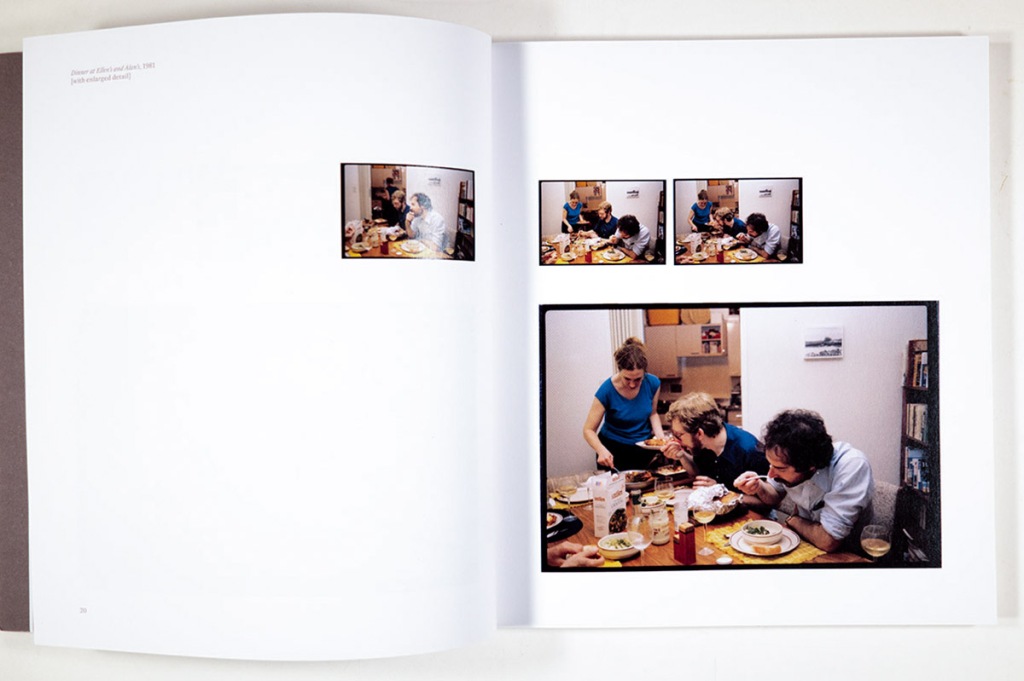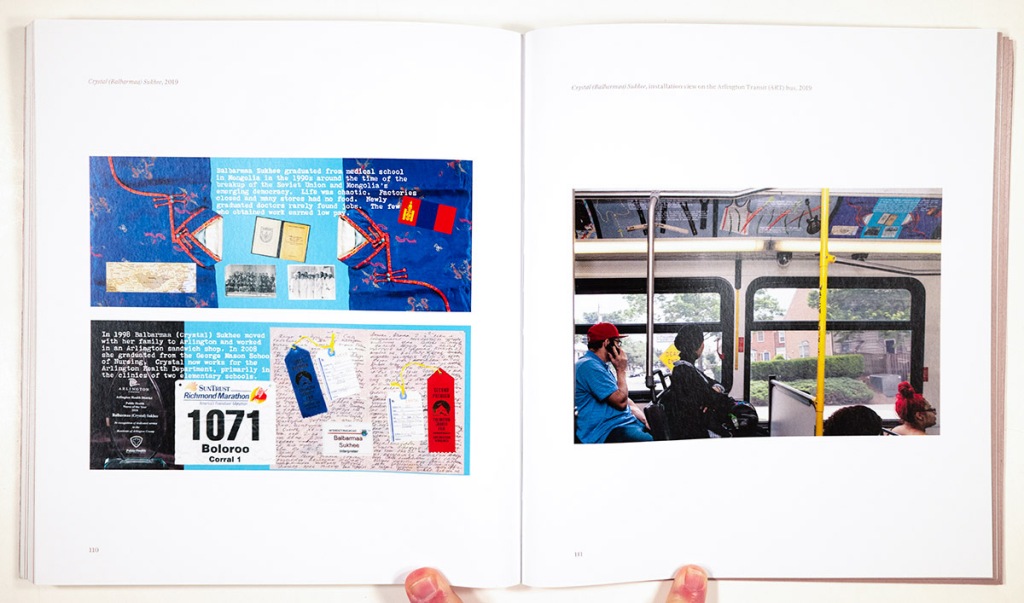
Review by Steve Harp ·
Gail Rebhan’s About Time, subtitled Four Decades of Photographic Series, is a catalog of a retrospective exhibition at the American University Museum in Washington D.C., on view in early Spring, 2023.
Photography is often defined (given the etymology of the word itself) as writing with light. But Rebhan’s work poses the question of whether photography might not just as centrally be considered “writing with time”? Any retrospective covering more than 40 years of work, such as the one presented here, will inevitably direct the viewer’s attention to the passage of time, but Rebhan’s work is centrally about time, about time’s passing and the cumulative effects of the small, banal passages that together combine to create the larger passages that become a life.
The very banality of the moments preserved here, in hindsight, create a series of achingly beautiful tributes to patterns of repetition and change over time. Beginning with “Family Sequences” – recounting the everyday rituals and activities in the “Mark and Lill” series (Mark being Rebhan’s husband and Lill his mother): grocery shopping, making and drinking coffee, watching tv, to “Sequential Still Life” (1981) photographs of Gail & Mark’s bed, dinner table, dishrack, hamper, shoes, catbox and food and “280 days” daily records of photographic recordings of herself in a mirror, Rebhan’s work notices the usually unnoticed, the moments that together build a life.
Rebhan gives these “run of the mill routines” a kind of heroic gravitas (which, in a strange way, recalls James Joyce’s Ulysses for me) while at the same (as is mentioned in the commentary) there is a kind sterile or clinical aspect that suggests the sequential photographs of Muybridge or Marey. Life continues in Rebhan’s work: ”Mother-Son Talk” recounting dialogues and moments of child intellectual development and the experience of parenting; her father’s aging in the early 2000s series “Can’t” in which Rebhan’s role is both observer and participant and “Room” (2007) which documents the clutter of her son’s living space, each still life of dirty clothes, pizza boxes, waste paper, electronics cords, cd boxes and empty beer bottles dutifully dated.
The work moves from recording time to depicting the passage and unrelenting fact of time through differing forms of documentary depiction: recording, commentary, evidence.
In 2009, the work makes a shift away from personal history toward what Rebhan terms “Cultural History” of place as her canvas seems to broaden and she investigates the history and structure of her locale or neighborhood. This “rephotography” or revisiting of place investigates ways in which, according to Rebhan, “the past coexists with the present.” The visual collection of facts Rebhan gathers in work such as the “Home Alone” project (2021) considers her personal involvement in historical events.
In the most recent work which concludes About Time, the series “Living” (2022) Rebhan seems to make a return to her earlier work in photographic reflections on her own aging body. Accompanying these almost clinical depictions of wrinkled skin – neck, knees, arms, feet, back – running along the bottom of the page is a series of terms used (mostly disparagingly) to describe aging women: “Baboushka, Battleaxe, Biddy, Cougar, Crone . . . Woman of a certain age“. I was reminded of Martha Roslers’ “The Bowery in two inadequate descriptive systems” (1974/75) which points as well to the inadequacy of both the visual and linguistic to present a fixed description or stasis. Rebhan seems to be reiterating in this work – as she has been exploring throughout her career – that “Photography is inherently about time.” While it can re-present specific details, its impact is in its recording of time and time’s flux.
As an object, the book is a perfect-bound paperback, 9” x 10.” Eight sections of visuals giving a chronological overview of Rebhan’s work are presented on a white, semi-gloss paper. The images are prefaced (and concluded) by nine essays by curator Sally Stein discussing Rebhan’s artistic career and projects. The Stein texts – black text on brown glossy paper – proved a challenging read in less than perfect lighting though the running commentaries themselves were exhaustive and illuminating in contextualizing Rebhan’s work.
After reading the catalog beginning to end, in order, I felt myself most drawn back to the earlier projects, those that made least use of text and collaging and simply let the photographs stand with only title or date to orient the viewer. I was reminded of Roland Barthes’ elegant and poignant comment in Camera Lucida, “the new punctum is time.” Time pierces us, time wounds us in these moments ripped from the continuum as all photographs are. Regardless of photography’s implied claim to freeze time, a retrospective of work such as About Time cannot but remind the viewer of time’s implacability, both personal and cultural.
____
Steve Harp is a Contributing Editor and Associate Professor The Art School, DePaul University
____
About Time, Gail Rebhan
Photographer: Gail Rebhan; born: Chicago, currently resides: Washington, DC.
Publisher: MACK Books; London, UK; 2023
Commentaries: Sally Stein
Text: English
Book description: Stiffcovers with flap, perfect-bound, printed in Italy. ISBN 978-1-913620-92-9
Editor: Sally Stein
____












Articles and photographs published on PhotoBook Journal may not be reproduced without the permission of the PhotoBook Journal staff and the photographer(s).
Leave a comment